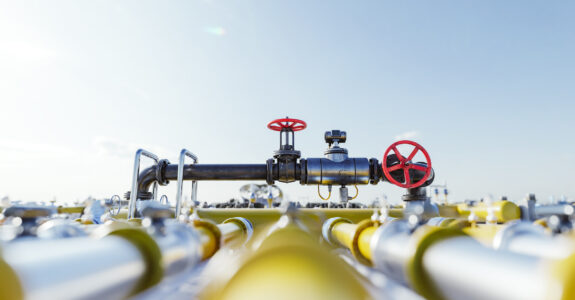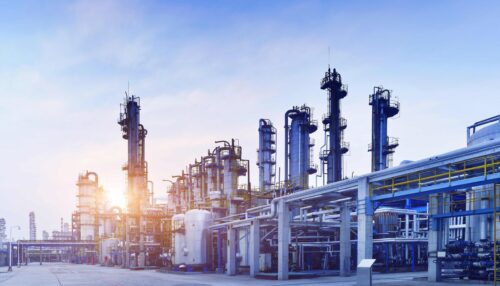
The Natural Gas Landscape in 2025: Navigating Challenges and Seizing New Opportunities
April 18, 2025
By: Elizabeth McGurk, Methane Sector Leader
Earlier this month, I had the privilege of attending the Spring 2025 Interstate Natural Gas Association of America (INGAA) Meeting, where industry leaders from across the midstream natural gas sector gathered to reflect on the current landscape and future direction of our industry. During my panel discussion on methane regulations in the United States (U.S.) and European Union, and throughout the event, it became increasingly clear that we stand at a pivotal moment—one brimming with both significant challenges and unprecedented opportunities.
As the world accelerates its transition toward more sustainable energy solutions along varied paths, the natural gas sector finds itself grappling with a complex regulatory environment. With different rules across jurisdictions—covering everything from production to emissions—there’s a lot of uncertainty. Yet at the same time, new opportunities are emerging that could reshape the industry in the years to come.
Opportunities on the Horizon: How Will Energy Demand Shape the Future?
The growing demand for energy is one of the most exciting opportunities for U.S. operators to pursue. This surge is largely driven by the rapid expansion of the tech industry—especially the insatiable need for data. As companies race to build infrastructure to support a digital-first world, the natural gas industry is uniquely positioned to provide the reliable, lower-carbon energy needed to power these innovations.
The demand for energy is not just growing domestically. With the lifting of the U.S. Liquefied Natural Gas (LNG) export ban, American natural gas is poised to make its mark on the global stage. We can expect to see increasing exports to the European Union, Asia, and other regions, driving international economic growth and positioning the U.S. as a key player in the global energy market.
Tackling Challenges: The Regulatory Maze and Infrastructure Bottlenecks
One of the most pressing issues facing the industry today is the need for durable, long-term permit reform.
These opportunities come with significant challenges that demand our attention and action. One of the most pressing issues facing the industry today is the need for durable, long-term permit reform. The recent regulatory environment, which has fluctuated dramatically with each new presidential administration, creates an atmosphere of uncertainty, preventing the industry from expanding infrastructure at the pace required to meet both domestic and international energy demands.
True, lasting policy reform cannot be achieved through temporary Executive Orders that can easily be reversed by future administrations. Instead, we must look to Congress to enact bipartisan legislation that ensures the energy infrastructure expansion we need will remain intact, regardless of political shifts. Only with thoughtful, collaborative conversation and subsequent policy changes can we move beyond the roadblocks we face today.
Additionally, the constant ebb and flow of regulations—along with the unpredictability of tariffs—creates a level of instability that is harmful to the long-term planning necessary for success. These regulatory swings create compliance risks and complicate our ability to manage resources and environmental impact effectively.
New Rules from Europe: A Global Shift in Methane Regulations
The global energy landscape is also evolving, with the European Union’s methane regulation (EUMR) setting a new standard for imported energy products. This regulation, which mandates stringent measurement, reporting, and verification (MRV) standards, is already in effect, and other international markets are expected to implement similar frameworks in the near future.
What does this mean for U.S. producers? The EUMR MRV import standards apply to energy products at the producer level. However, the U.S. natural gas supply chain is segmented. Natural gas from multiple operators is pooled before its processed, transported, liquefied, and exported, making it challenging to estimate production-level methane emissions of each LNG shipment accurately. This reality presents significant data-sharing and calculation methodology hurdles that need to be addressed as we move forward.
Currently, the U.S. methane regulations do not fully meet the EUMR’s requirements for national-level compliance. Therefore, at this time the Oil and Gas Methane Partnership 2.0 (OGMP 2.0) methodologies, with independent verification, appears to be the most straightforward path for U.S. companies to align with international methane standards, ensuring that our exports meet the rigorous environmental standards expected by global markets.
The Path Forward: Turning Challenges into Growth Opportunities
I strongly believe that we, as an industry, also need to tell our own story about the improvements and commitments we have made to develop natural gas as a critical component of today’s low-carbon energy supply – to be used alongside, and in support of, renewable energy sources.
The road ahead for the natural gas industry is filled with both obstacles and remarkable opportunities. The increasing demand for energy, the global focus on sustainability, and the push for stronger regulatory compliance are all forces shaping our future. Regulations are coalescing around a measurement-informed emissions mitigation strategy that ensures industry targets the right emission sources for reduction. We live in a time of remarkable innovation and data sharing; we can employ the newest strategies for both identifying and reducing methane emissions. This strategy will have the added benefit of reducing product loss while making U.S. natural gas more competitive as a lower-carbon energy source for rising technology-driven domestic demand and for export to the international market.
I strongly believe that we, as an industry, also need to tell our own story about the improvements and commitments we have made to develop natural gas as a critical component of today’s low-carbon energy supply – to be used alongside, and in support of, renewable energy sources. Open, honest, conversations about the emissions footprint of the natural gas value chain and the infrastructure needed to continue to deliver this reliable, affordable, and accessible source of energy are the first steps to achieving durable permit reform needed to meet energy demands.
As an industry, we have the tools, knowledge, and resources to rise to the occasion. At Montrose, we are committed to helping our clients navigate this complex landscape. Our comprehensive environmental solutions are designed not only to support regulatory compliance but to drive meaningful change and sustainable growth across the energy sector.
Let’s work together to stay ahead of the curve and build a future where natural gas continues to play a vital role in powering the world—responsibly, efficiently, and with a strong commitment to environmental stewardship. Reach out to our team today to explore how we can help you lead the charge in this exciting new era.
Related Montrose Resources
 Elizabeth McGurk
Elizabeth McGurk
Methane Sector Leader
As Montrose Environmental’s Methane Market Sector Leader, Elizabeth works across Montrose verticals to deliver complex methane management projects. She joined Montrose in 2022, bringing nearly a decade of experience in air quality consulting with a specialty in oil and gas and greenhouse gas (GHG) accounting. With a deep understanding of the energy industry combined with expertise in methane quantification and mitigation, oil and gas sustainability framework implementation, regulatory analysis, and auditing, she supports the delivery of integrated methane services. Driven by her passion for leveraging measurement-informed data to inform effective emissions mitigation efforts, she strategizes OGMP 2.0 projects worldwide and designs measurement pilots with relation to the revised U.S. EPA Subpart W GHG reporting rule. Additionally, Elizabeth has delivered technical training on multiple topics relating to air quality and excels in distilling and presenting complex information, impacts, and solutions to various stakeholders.




